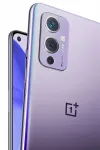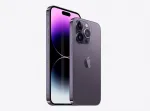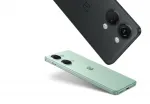The Nokia 6670, also known as the Nokia 6670, is a discontinued device under the Nokia brand. It was first announced in 2004 during the third quarter of the year. Despite being discontinued, it is still listed as one of the brand's notable models to date. With its solid specifications and design, it has captured attention and admiration from many tech enthusiasts and consumers alike.
Powering the Nokia 6670 is the Symbian 7.0s operating system, accompanied by the Series 60 v2.0 user interface. This allowed for a smooth and easy navigation experience, with its 5-way navi key located below the 2.1-inch TFT display. This display, with a resolution of 176 x 208 pixels and 65K colors, offers a clear and vibrant viewing experience for users. Although it may not be on par with today's standard, it was considered advanced during its time.
The device weighs approximately 120 grams and has dimensions measuring 108.6 x 53 x 20.9 mm, with a volume of 98 cc. It also features a sleek design that comes in two color options: Deep Blue and Aluminum Grey. These color options offered a sense of personalization to users, allowing them to choose a device that suits their style and preferences.
In terms of connectivity, the Nokia 6670 does not have WLAN capabilities, but it does have Bluetooth 1.1 and a Pop-Port USB for data transfer purposes. It also supports GSM technology and has the necessary bands – GSM 850/1800/1900 for the US version and GSM 900/1800/1900 for the rest of the world. However, it does not support EDGE, which may limit internet browsing speeds for users.
One notable feature of the Nokia 6670 is its removable Li-Ion 900 mAh battery. This battery offers a standby time of up to 240 hours and a talk time of up to 4 hours. It also supports the playback of 10-minute video clips, which was considered impressive during its release. However, it may not be able to keep up with today's standards, especially with the increasing use of smartphones for multimedia purposes.
For storage, the Nokia 6670 comes with an internal capacity of 8MB. Users can also expand their storage capacity using an RS-DV-MMC card, with a 64 MB card included in the device's package. This storage capacity may seem small compared to today's standard, but it was considered decent at the time.
The Nokia 6670 also features a 1 MP main camera that can record videos in QCIF resolution. Although it may not be suitable for professional photography needs, it was considered a decent camera for everyday use. Unfortunately, the device does not come with a selfie camera, which may not be a downside for some users given that front cameras were not as important back in 2004 compared to today.
Other notable features of the Nokia 6670 include its vibration and downloadable polyphonic, monophonic, and MP3 ringtones, a loudspeaker, and support for MP3/AAC/MP4 media formats. It also has a built-in browser that supports WAP 2.0/xHTML and HTML with .pdf support. However, it does not have any sensors, which may limit the device's functionality for some users.
According to the device's specifications, it has a SAR value of 0.73 W/kg (head) and 0.60 W/kg (body) and a SAR EU value of 0.52 W/kg (head). These values were within the acceptable range during its release, which means the device was safe for use.
In conclusion, the Nokia 6670 offers decent specifications and features that made it a notable device during its release. Although it may not hold up to today's standards, it still has its place in the history of Nokia's models. Its sleek design, smooth navigation, and solid features ensure that it will always be remembered as a pioneer in the world of smartphones.









